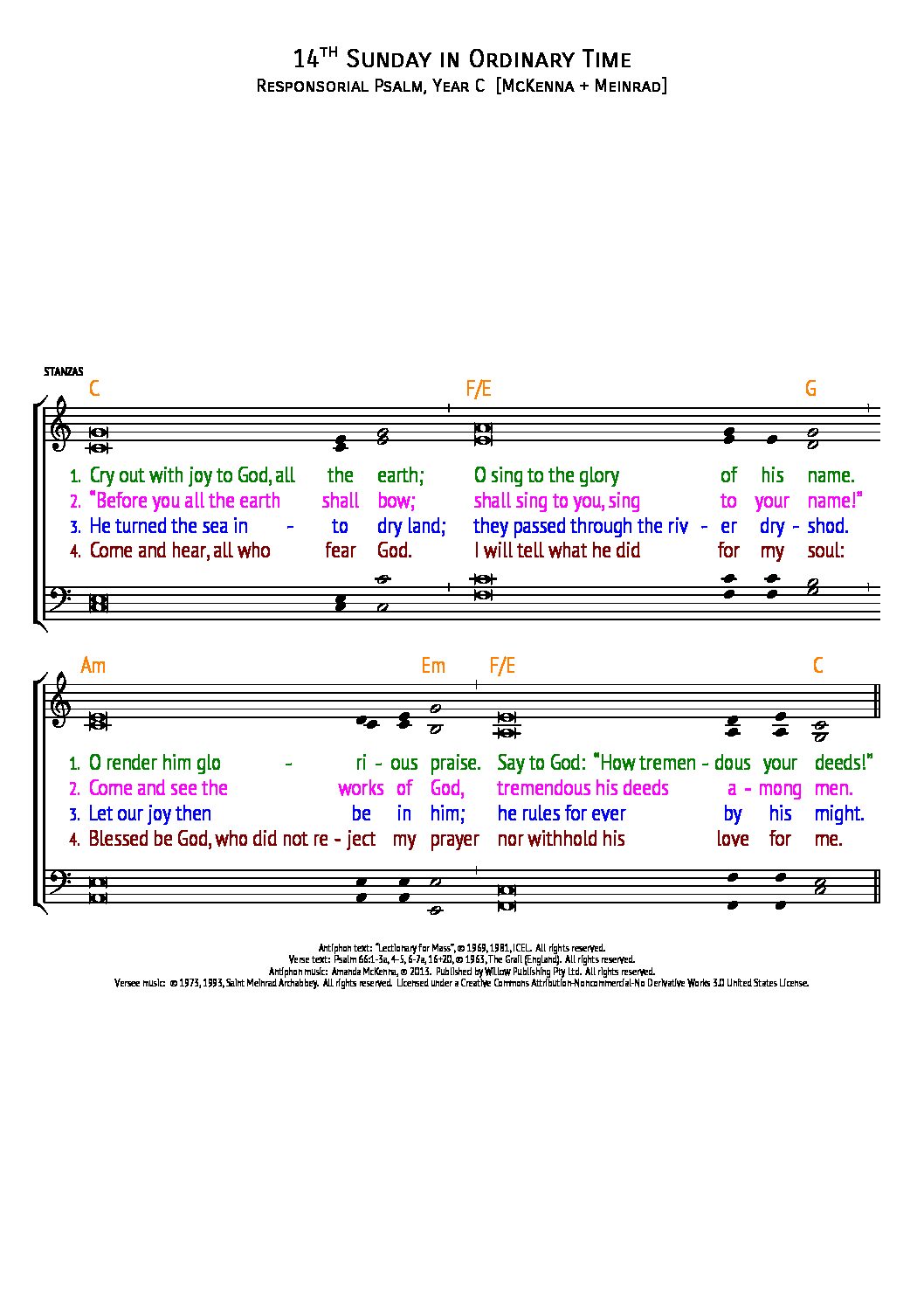Amanda McKenna’s popular psalm antiphon settings are quite accessible to the average parish, and have been designed to be used with spoken verses. The verses can, however, easily be sung by using chant tones, and it’s much easier than using contemporary style settings with all the variations normally found between verses. They maintain the simplicity of Amanda’s compositions.
A good starting point are the popular St Meinrad Archabbey psalm tones which are legally free to use (non-commercially) and can be found at
https://www.saintmeinrad.org/the-monastery/liturgical-music/downloads/
Go down near the bottom to number 5 in the “Other” section. There you will find music for the eight Gregorian modes, so there are only eight tunes to choose from for the verses. The one to use depends on mood and matching the key to that of Amanda’s antiphon, which may require some compromise. The tunes to use depend on the emotion of the text; from Kevin Vogel’s YouTube examples: 1 – serious; 2 – sad; 3 – vehement; 4 – harmonious; 5 – happy; 6 – devout; 7 – angelic; 8 – very happy.
I’ve attached an example of how to use them from the 14th Sunday in Ordinary Time where the Psalm is 65 (66) and the response is “Let all the earth cry out to God with joy.”

The music for the psalm verses is attached without the antiphon for copyright reasons. For the audio, please note that for some reason Amanda left out “all”, so I added a two beat C at the beginning to correct this and also raised the melody a step. There is a file with music alone, and another file where I’ve added vocals which are not great. I believe the tones work well with Amanda’s score, are not boring or stodgy, and are pleasing to the ear even if my vocals aren’t!
Chant is sung speech, so the goal is to make the diction sound natural with the exception of the last syllable in each phrase, which is hung on to a little bit. This means, however, that it’s impossible to create an audio backing file with the right timings of the notes for the verses. There are plenty of examples on YouTube of well-sung “parish-style” chant psalms, and any of Chris Brunelle’s weekly guitar-led responsorial psalm demos are a great starting point.

Chris W
Thanks for this very original and useful idea, especially for parishes like ours where Amanda McKenna’s psalms have been taken to heart and are well sung by the assembly. I agree that backings are lousy for chant, especially mine over the years!
cheers
Geoff
I should have put up a link to where Amanda McKenna’s Psalm collection can be purchased.
Buy it at As One Voice:
http://www.asonevoice.com.au/CatalogueRetrieve.aspx?ProductID=10060597&A=SearchResult&SearchID=60122978&ObjectID=10060597&ObjectType=27
One thing I should have included is a link to a really useful resource page for the Meinrad tones as it includes guitar chords, recordings of each mode and suggested modes for each psalm (though the latter can only be a starting point due to the need to have a singable key compatible with Amanda’s setting).
http://www.stutler.cc/russ/st_meinrad_tones.html
Despite a recent update, a number of links on that page don’t work, but all the self-contained useful links appear to be okay.